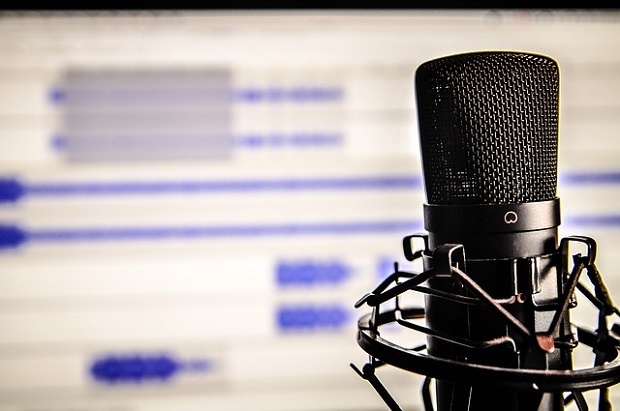 Image via Pixabay
Image via Pixabay
Not everyone can afford the thousands of dollars worth of tools to make stellar home recordings. The good news is you don't need them – a skilled craftsman can get the most out of simple tools.
If you hone your skills and broaden your knowledge, you can get by with the basic stuff you probably already own (assuming you have recording software and monitors). Here are just a few tips to help you along.
Know your speakers
If you're doing any kind of mixing, you likely have speakers in some form. And if you don't, fear not – you don't need to spend thousands. My current speakers cost maybe $150 new, and they've served me well.
The important thing – whether you're using speakers worth a small fortune or a cheap starter set – is to know your speakers well. Have you ever mixed in your studio and then listened to that same track in your car only to discover it sounds totally different? It's not that your original mix was necessarily bad; it's simply a matter of not knowing the intricacies of your monitors.
In a lot of studios, the engineer plays music over the monitors before the session starts (particularly if you're the first session of the day or between sessions to cleanse their palate). There's a reason behind this: it's a great way to compare what you're mixing to something that's already done.
How does the bass sound on that Coldplay recording verses the project you're working on? How do the vocals sit in the mix for that top-40 pop song? If you have something high to aim for, your mix is going to be a heck of a lot closer to a finished product when all is said and done.
That doesn't mean it won't sound different on different sets of speakers – it likely will – but it should sound better consistently.
Get some distance
An engineer friend taught me this trick while I was in college. We didn't have very much equipment to work with (in fact, he held up a blanket while I sang a vocal track to dampen the sound), but the recordings always came out stellar.
His trick – which blew me away the first time I heard about it – was to try to listen to your mix at different distances. Here's what I mean: play your recording and step outside the room. Can you hear everything well? Is there good separation? Is everything sitting well in the mix? You might find that the shakers are way too loud outside the room but sound pretty solid when you're sitting in front of the speakers.
Knowing my room and speakers as I do, I can make adjustments accordingly. (In my case, I lean a bit heavier on what I hear when I step outside.) If you're in a cramped space, another trick is to turn the master volume way down so you can barely hear what's peeking out of the mix.
Is what's coming to the top what you want to hear? The kind of mix you're going for is going to dictate what you're listening for. (If it's rock, the vocals can sit further back in the mix vs. the drums, etc.) Turn it back up to a normal volume and adjust accordingly.
Learn the craft
Like it or not, recording is a skill – one every budding artist should have in his or her toolkit. When I first started taking recording seriously, I read everything I could get my hands on. I talked to engineers I knew – I bought them lunch or coffee in return for picking their brains on my mixes. I read forums and watched countless YouTube videos. I was surprised by how many techniques I picked up that didn't require the use of some crazy expensive piece of equipment.
This may sound a bit hackneyed, but the very best equipment you have is something you already own – your ears. By honing your skills, you'll find that just by shaving two dB off of a certain frequency, you've made those vocals pop more. Or by rolling off everything below 40 kHz, you've cleaned up that muddy sound in the mix.
You can learn by trial and error, of course – some people learn better that way – but it will take you much longer than simply reading up. Sonicbids has some great articles to help you on your journey. I'm also a very big fan of The Recording Revolution. The videos and articles there helped me tremendously.
The distance between where you are and where you want to be can seem gargantuan – an impossible climb. I assure you, it's not. If you have the drive and aptitude, you can make it happen. As legendary producer George Martin said, “All you need is ears.”
Next up:
- 6 Quick Steps to Diagnose and Eliminate Muddy Mixes
- Here's Everything You Need to Do to Prepare Your Tracks for Mixing
- 6 Tricks to Make Your Mixes Sound Three Dimensional
- The 4 Elements That Separate a Good Mix From a Great Mix
Daniel Reifsnyder is a Nashville-based, Grammy-nominated songwriter, having started his musical journey at the age of three. In addition to being an accomplished commercial actor, his voice can be heard on The Magic School Bus theme song and in Home Alone 2. Throughout his career, he has had the honor of working with the likes of Michael Jackson and Little Richard among many others. He is a regular contributor to several music-related blogs, including his own.







